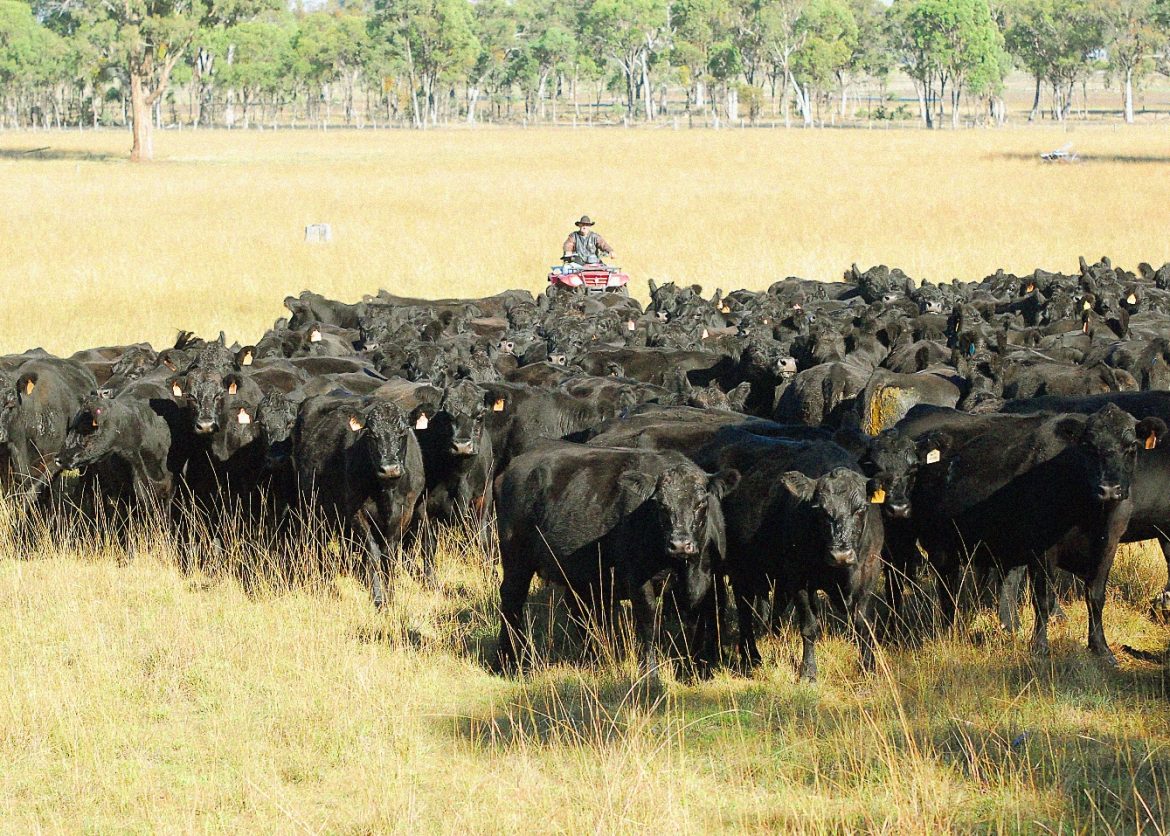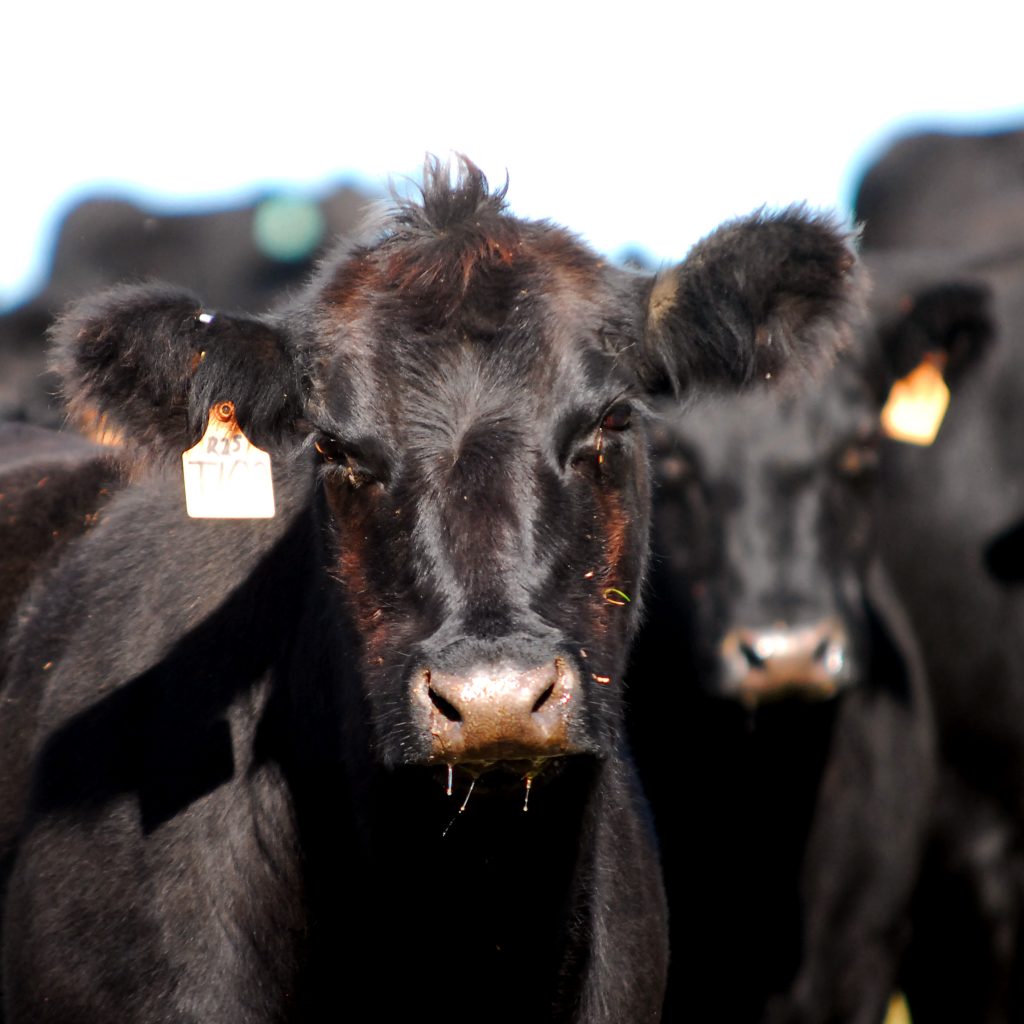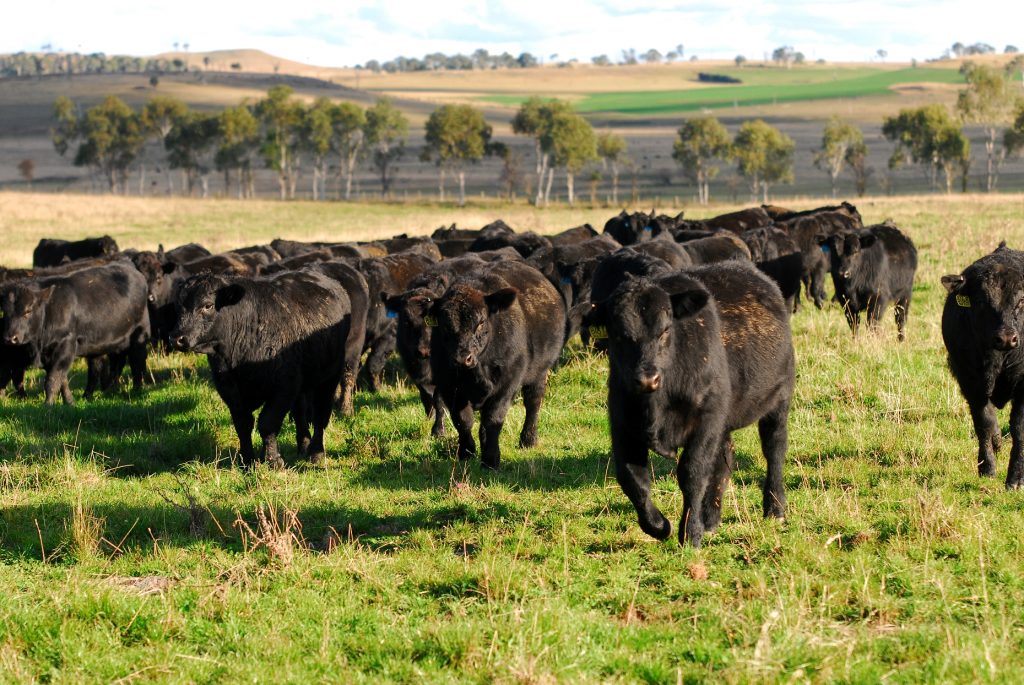Australian beef is regarded as amongst the best in the world and a major reason for this is the excellent reputation enjoyed by the superior meat quality of Angus cattle. Since 1919, The Angus Society of Australia (Angus Australia) has been promoting the value of Angus cattle and Angus beef products.
The initial function of Angus Australia was to provide an avenue for breeders of Angus cattle to register the pedigree of their Angus-based cattle and to assist in the development of the breed in Australia. But over the years the Society has broadened its range of functions and today it plays a major role in helping its members develop and produce world-leading Angus-based cattle and related genetics.
Angus Australia is a not for profit, member based company which is actively involved in supporting its members in their efforts to market both Angus genetics and beef. It also promotes the Angus brand through its subsidiary company, Certified Angus Group, which was formed in 1996.
This company was established to promote and protect the Angus brand and it has both Certified Australian Angus Beef (CAAB) and Angus Pure Brands wholly owned by the Aussie Angus farmers who are members of Angus Australia.
Certified Australian Angus Beef is grain fed to give it excellent flavour and high-quality marbling characteristics. The extent of marbling, which refers to the fat found within a cut of meat and between the muscle fibres, determines the quality of beef and CAAB has gained a strong reputation on this count. The Angus Pure brand has gained prominence as pasture-fed beef, offering a hormone growth promotant and antibiotic free option for customers looking for a natural product.
Peter Parnell, Chief Executive Officer of Angus Australia, describes the inception of the society, “Back in 1919 there were about 10 to 12 members and the society has gradually grown since that time and now we have 3,500 members. We have different membership categories. We have what we call full members who record cattle and take advantage of the entire range of services provided by Angus Australia.
“We also have commercial members who do not record cattle but they use some of our services, our educational services for example, and services related to commercial beef production. We have a junior membership for young enthusiasts of the beef industry who are less than 25 years of age. We also have a very strong youth development program.”
The Society has a staff of 21 who are involved in different areas and projects. One of the important activities currently being conducted by Angus Australia is a large research project involving progeny testing of a number of young bulls. The Angus Sire Benchmarking Program (ASBP) is being conducted with the support of Meat & Livestock Australia and industry partners Bayer Australia, Rangers Valley Feedlot and John Dee Abattoir
The ASBP aims to generate test data of modern Angus bulls particularly for hard to measure traits such as feed efficiency, abattoir carcase measurement, meat quality attributes and reproduction. Another important objective that this program has is to build a comprehensive phenotype and genotype database on Australian Angus for genomic technology validation, research and development.
In order to meet these objectives 40 sires a year are joined with 2,000 Angus cows to achieve 25 progeny per sire. All the Angus sires are nominated by Angus Australia members and the cows are located across several commercial co-operator herds in New South Wales and Victoria.
The project involves collecting data regarding calving ease, growth, temperament, heifer reproduction, structure, feed efficiency, abattoir carcase and beef quality attributes.
The fact that Angus Australia is the driving force behind projects of this nature illustrates the level of commitment that the Society has towards its ongoing objective of helping its members develop and produce world-leading Angus-based cattle and related genetics. In addition to the ABSP, there are several other projects in the areas of education and software development that the Society is actively pursuing. In addition to this it is also involved in programs directed towards its young members.
Speaking about the use of modern scientific techniques to meet the objectives of Angus Australia, Peter Parnell says, “One of the biggest changes in the last five years has been the greater use of DNA or genomics technology where we actually take samples of the DNA of animals and we now have data from which we derive a lot of information on the genetic potential of animals based on the DNA sample.
“We can use DNA samples to screen animals for undesirable genetic conditions that they might be carriers for. They may not express those conditions but they may carry them and their progeny might display the conditions. We are able to screen the population and effectively eliminate or minimise the use of animals that carry undesirable genes.
“We also use the genetic profiles to increase the accuracy of identifying and selecting animals of high merit, especially those performance characteristics that are very difficult or expensive to measure. Feed conversion efficiency for example or marbling performance, which normally you can measure only in an animal that has already been processed. Now we can actually estimate what genes young bulls might carry for those characteristics based on their DNA.”
One of the main goals of Angus Australia is to provide its members who are breeding Angus cattle the tools and the technology to continue to develop their cattle and to become more profitable. A key initiative of the Society towards meeting this objective is a genetic evaluation service called Angus Breedplan.
This service is provided with the help of scientists based at Armidale, where the headquarters of Angus Australia is also located. The Society does the interface with its members and records data to enable it to benchmark the performance of cattle.
Subsequently, feedback is provided to members so that they can improve the performance of cattle over time. This program has been in place for the last 30 years and the average profitability of Angus cattle has improved by 3.5% per year. This has resulted in an enormous gain in profitability of members over the 30 year period.
In this period there have been marked changes in the performance of Angus cattle, including improvements in growth performance, fertility rates, carcase performance, meat quality and feed efficiency. A combination of all of these factors have come together to improve the profitability of Angus cattle.
As a result of this, there have been enormous gains not only for members of Angus Australia but for a wider section of the Australian beef industry who source their Angus breeding stock from members of the Society.
To meet its objective of improving the genetic properties of Angus cattle, Angus Australia has been associated with a research group, Animal Genetics and Breeding Unit at the University of New England at Armidale, for the last 30 years. This partnership has been of great benefit to the Society and tremendous gains have been made in the Angus breed due to the research conducted by this group.
Angus Australia has been involved in the beef and cattle industry for almost 100 years and consequently it is very well known and commands the highest degree of respect in the trade and in government circles.
It promotes its services to members through a weekly electronic newsletter that is also sent out to other organisations connected with the cattle industry. Angus Australia also provides press releases to the various media outlets in Australia that are involved in communications to the agricultural sector.
It also has a full time marketing staff who looks for opportunities to not only promote Angus Australia, but to establish a dialogue with other bodies connected with the beef sector. An effort is made to highlight initiatives that are important for the ongoing improvement of profitability of beef production in Australia, particularly with reference to the Angus breed.
The Society has a very active website which receives a lot of visits as it contains a complete data base of registered animals. The website also hosts online sale catalogues and up to date information on animals that people may be considering for their breeding program. Angus Australia is very active on social media through Facebook and Twitter, particularly with its Angus youth program.
To communicate effectively with its members, organisations connected with the cattle industry and other bodies, Angus Australia relies on electronic media and social media. It also makes extensive use of print media which is still quite an important part of communication in the Australian agricultural sector.
Commenting about the future of the cattle industry, Peter Parnell says, “We are very optimistic about the future of the Australian beef industry because of the demand for high quality protein in the developing countries. The future of beef production is very good because Angus is well-established in terms of our footprint in the Australian beef industry and the technology that we can provide our breeders.
“Angus Australia has evolved over the last 100 years from being a traditional society that simply recorded pedigrees. We are now a modern innovation company that is strongly focussed on providing value added services to our members and making available to them the opportunity to enhance their product over time. I think the future for our organisation is very positive.”




 This information will never be shared to third parties
This information will never be shared to third parties